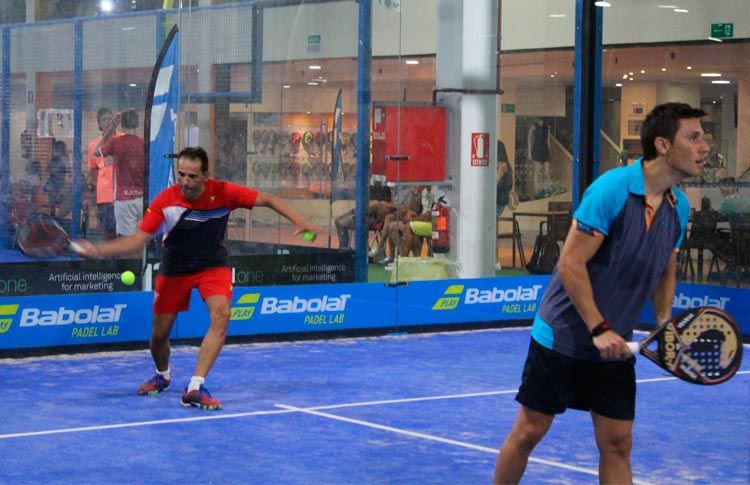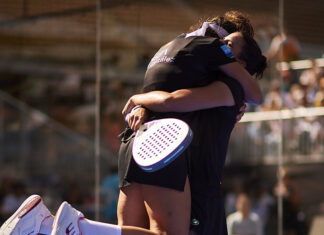Padel World Press .- This situation usually occurs in players with less experience or just started in paddle tennis. It goes without saying that the ideal is for both players to go to the net to put more pressure on their rivals and to find more shots of definition; or they play as a block to better cover the spaces and not leave so many gaps.
Now, if a teammate does not know how to play on the net, it is preferable that he plays back and not go up and lose all the balls. It is here where we will have to adapt to that way of playing so as not to be disoriented and badly stopped inside the track.
Something that is also important to take into account is our physical condition, since when we do not have good mobility, the ideal scheme will no longer be to go to the net because we will not have good recovery of the ball if they pass us, which will be very likely. This is where playing both at the base, or one behind and the partner ahead depending on the situation, could become the most appropriate scheme.
We will analyze different game situations to help them decide what to do to adapt to the partner and optimize the results.
If we know that our partner does not go to the network, what will determine our position will be the position of the rivals first, so I will have to see if both are in the background, one in the network and one behind or both In the net.
- Rivals play back, or are occasionally in that position. In principle I would not have problems playing on the net because I can move freely knowing that my partner covers me in the background, indeed, before a balloon very past I can change sides and my partner is the one to return it to avoid running of more and not messing up on the court.
- They always play one back and one forward, or are occasionally in that position. In this case I can remain in the network only if my partner guarantees me to be able to direct his balls to the player who is in the background not to be intercepted in any way by the rival that plays in the network, trying to demand the one in the base so that I can define. If I am not sure that my partner can play his balls in that direction, it is preferable to resign my game on the net rising in a timely manner, when my rivals are very demanding.
- Both rivals play on the net. It will be very difficult to remain there with my partner in the background and it will be convenient for me to go back so as not to be exposed to a high ball from my partner.
All this is much more difficult in the dynamics of the point so I have to be very careful to make the right decisions in the course of the play.
Now I am going to give you some examples with different match situations.
a) I am in the network; my partner and the rivals back. If they play me I will continue in that position trying to win the point but if after playing a ball demanded from my partner, both opponents go up to the net, the best thing I can do is to immediately back down along with the ball played by the opponent.
b) We have to take out. I will be on the net when my teammate comes out and I will go up to the net behind my serve to take advantage of the possibility of a high and slow return of the opponent ... Now, if the return is very good, press my partner and the opponents go up to the network , it will be good for me to go back. Generally, after a second serve it will be better to stay at the base.
c) Take the rivals. I can only raise if one of the two rivals stays in the background and I see our return goes with pressure in that direction. In the case that both are in the network after removing, I can upload when:
- We took the rivals to the bottom through a past balloon that they could not smash.
- We pass them with a low ball and they retreat forced to recover it, generally leaving a ball that is easy to define if I am in the net.
You can list more examples but the concept that I want to leave is that they can adapt to their partner's game and try to form a team in a way that can be complemented both tactically and psychically. It is very difficult to find the dreamed partner that plays as we want and that matches our way of understanding the game; so it will be much easier to learn to adapt to the different ways of playing of our partners and try to build a strong couple with good results.
Image: Time2Padel
* You can follow all the news of the world of paddle in our profiles of Facebook y Twitter as well as subscribe to our Newsletter .













